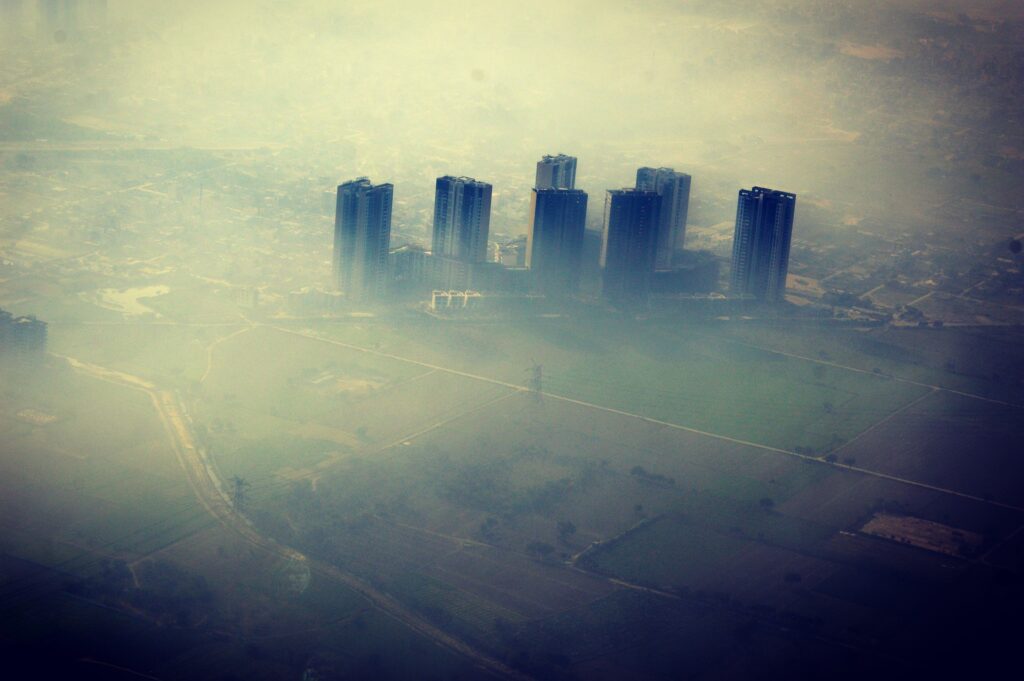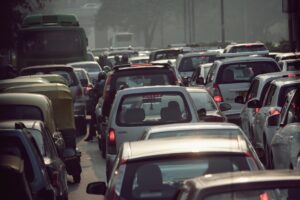Delhi NCR Pollution: Unveiling Key Factors Behind Hazy Skies
Come winter, the air quality index (AQI) across Delhi NCR frequently reaches hazardous levels, posing significant health risks to its residents.

Come winter, the air quality index (AQI) across Delhi NCR frequently reaches hazardous levels, posing significant health risks to its residents.
Odd-Even scheme is going to kick in Delhi and schools will remain shut to safeguard the health of children as pollution continues to reach at alarming levels. Come winter, the air quality index (AQI) across Delhi NCR frequently reaches hazardous levels, posing significant health risks to its residents. The city has become a victim of persistent and alarming air pollution. Even the most healthy person may feel breathing issues and may easily get sick in the open air.
Let’s understand the key reasons behind the pollution in the city.
Crop Burning in Neighbouring States
During the winter months, Delhi’s air pollution is exacerbated by crop burning in neighbouring states, particularly Punjab and Haryana. Farmers in these regions often resort to burning paddy straw, the leftover stalks after rice harvesting, to clear their fields quickly and cheaply. This practice releases a massive amount of PM into the air, which is then transported by winds to Delhi, further deteriorating the city’s air quality.
Vehicular Emissions
One of the primary culprits behind Delhi’s air pollution is vehicular emissions. With over 10 million registered vehicles, Delhi boasts the highest vehicular density in India. This vast number of vehicles, particularly older models with inefficient emission controls, releases a significant amount of harmful pollutants into the air, including particulate matter (PM), nitrogen oxides (NOx), and carbon monoxide (CO). These pollutants contribute to the formation of smog, a dense haze that traps pollutants and reduces visibility.
Industrial Pollution and Construction Activities
Industrial activities, including power plants, factories, and brick kilns, also contribute to Delhi’s air pollution. These industries release a variety of pollutants, including PM, sulfur dioxide (SO2), and volatile organic compounds (VOCs). Additionally, construction activities generate dust and PM, further adding to the air pollution burden.
Geographical Location and Meteorological Conditions
Delhi’s geographical location and meteorological conditions also play a role in trapping pollutants and exacerbating air pollution. The city is situated in a bowl-shaped region, surrounded by hills on three sides. This topography traps pollutants and prevents their dispersion. Additionally, during winter months, low temperatures and calm winds lead to the formation of inversions, where a layer of warm air traps colder air below, preventing the rise and dispersion of pollutants.
Impact on Health and Environment
Delhi’s air pollution has severe health consequences for its residents. Exposure to high levels of air pollution can lead to respiratory problems such as asthma, bronchitis, and chronic obstructive pulmonary disease (COPD). It can also exacerbate existing heart conditions and increase the risk of lung cancer. Children, the elderly, and those with pre-existing respiratory conditions are particularly vulnerable to the adverse effects of air pollution.
The environment also suffers from Delhi’s air pollution. Smog reduces visibility, affecting air and road transportation. Acid rain, caused by the release of SO2 and NOx, damages crops, forests, and buildings. Additionally, air pollution can contribute to climate change by trapping heat in the atmosphere.
Addressing the Challenge
Tackling Delhi’s air pollution requires a comprehensive and multi-faceted approach. The government has implemented various measures, including stricter emission standards for vehicles, promoting public transportation, and introducing odd-even vehicle rationing schemes. However, more needs to be done to address the root causes of the problem.
Encouraging farmers to adopt alternative methods of straw management, such as mechanical straw incorporation or in-situ stubble burning, is crucial to reduce crop burning emissions. Investing in cleaner industrial technologies and enforcing stricter pollution control regulations can further reduce industrial emissions. Additionally, promoting green spaces and adopting sustainable urban planning practices can improve air circulation and reduce the accumulation of pollutants.
A Collective Effort for Cleaner Skies
Delhi’s air pollution is a complex issue that requires a concerted effort from individuals, communities, and the government. By adopting eco-friendly practices, supporting sustainable initiatives, and holding authorities accountable, citizens can play a significant role in improving Delhi’s air quality. Together, we can work towards a cleaner, healthier, and more sustainable future for Delhi.







